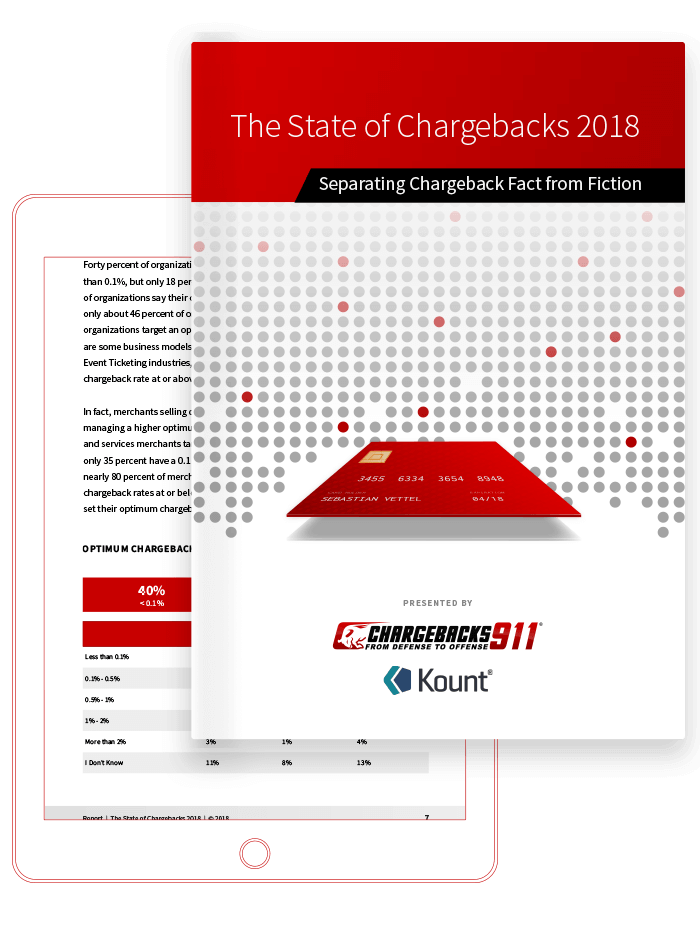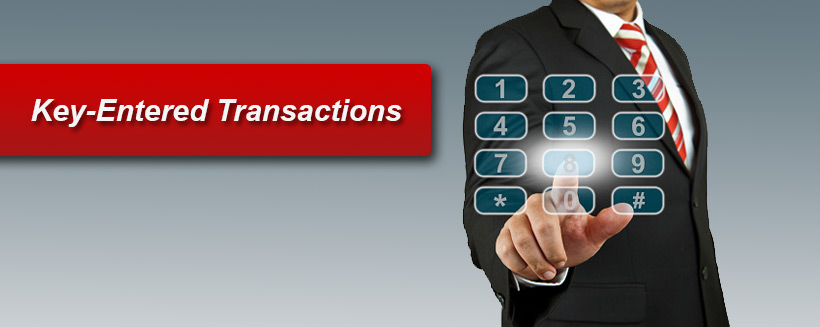Chargeback Prevention: Reduce Key-Entered Transactions
For business owners with a brick-and-mortar store, chargeback prevention is fairly easy. Chargeback rates tend to be much lower for transactions made at a physical store rather than online.
However, key-entered transactions can skew the chargeback rate because there is a higher margin for human error.
What Is A Key-Entered Transaction?
Key-entered transactions are performed in a store when the merchant's card reader is malfunctioning or if the card itself cannot be read. So instead of swiping the card, the employee will manually enter the card's information into the system.
How many of your chargebacks are caused by ... you? Our Merchant Compliance Review knows.

Employees should make an imprint of the card on carbon paper and have the
customer sign and date the receipt, which the merchant will keep on file.
Though this is a legitimate way to process a purchase, key-entered transactions are associated with higher rates of fraud because normal security measures present in card-reading machines are not utilized.
And if an imprint of the card is not made, fighting chargebacks is nearly impossible for merchants.

The State of Chargebacks 2018
Launched as a way of collecting and analyzing industry findings, the State of Chargebacks survey reflects the experiences of more than one thousand respondents in the card-not-present space. Download to learn the latest insights on fraud and chargeback management.
Free DownloadReasons Key-Entered Transactions Occur
Key-entered transactions are performed under a variety of circumstances. Any of the following complications at the point of sale can result in a sales associate processing a transaction manually:
- Terminal's card reader is malfunctioning or dirty: Monitor card readers regularly to ensure that they are clean and in good working order. Do not allow food or drink near the point of sale machines because one spill can seriously damage the machine.
- Card reader is not being used properly: This is especially common when something, such as wires or a barcode reader, is in the way of the card during the swiping process. Cards must be swiped in one direction, smoothly and quickly. Do not swipe cards at an angle or multiple times in both directions.
- Card's magnetic stripe cannot be read: The card may have been demagnetized by an anti-theft device. If your business owns such a device, keep it away from the counter where transactions are processed as it may accidentally demagnetize a customer's card.
How To Analyze Your Key-Entered Transaction Rate
Merchants should regularly analyze their key-entered transaction rate to find a correlation between this type of transaction and particular stores, terminals, or employees.
Stores, terminals, or employees with more than a 1% key-entered transaction rate should be reviewed carefully, as they represent higher risk for chargebacks.
There is a time and a place for key-entered transactions, so do not be alarmed when they occur. However, make sure that employees are trained in proper procedure, such as making credit card imprints or creating a manual sales receipt, and keep these documents on file for future reference.
If your key-entered transaction rate is high or you have sustained several chargebacks because of this process, let us know. Fill out the form to the right and we’ll review your current practices.









